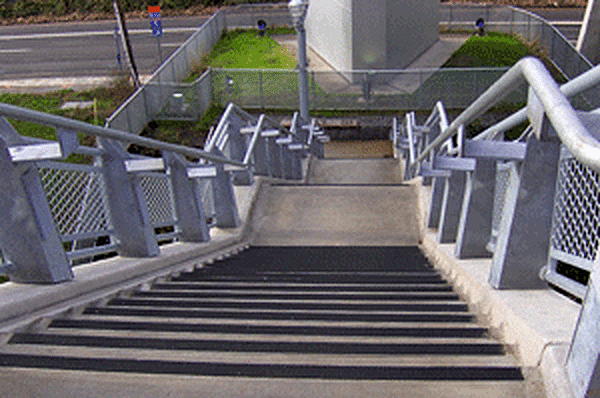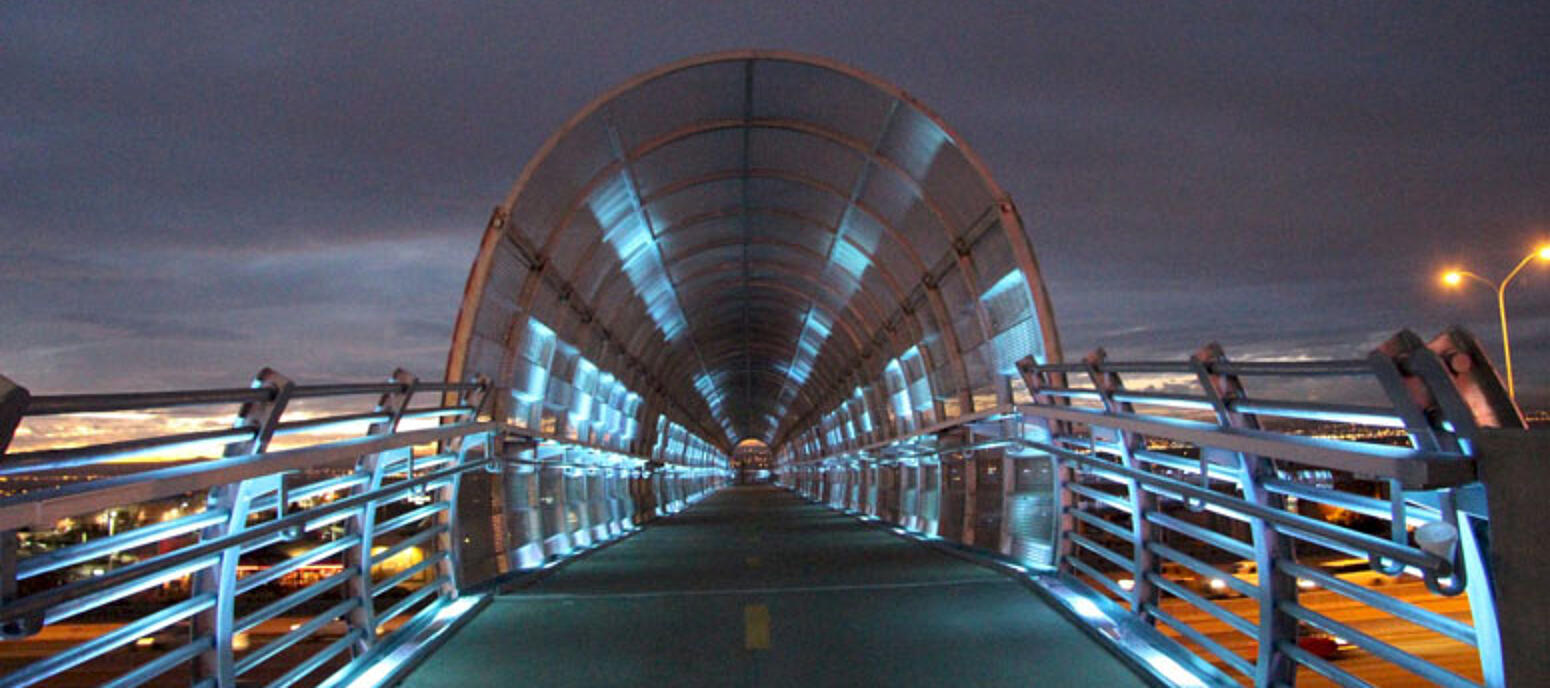Pedestrian
Pedestrian bridges are only effective safety tools if they can entice users. Because pedestrian bridges are often a significant cost investment by the city or state, it is critical to protecting these investments in an affordable, maintenance-free manner. Hot-dip galvanized steel provides cost-effective, maintenance-free corrosion protection while offering the aesthetic flexibility of steel, ensuring these bridges not only meet citizen needs but also become a source of community pride.

Pedestrian bridges, such as the Liberty Bridge in Greenville, SC, are regularly exposed to corrosive elements and abuse as they stretch across busy traffic or connect over bodies of water. Utilizing hot-dip galvanized steel for a pedestrian bridge means the entire structure will benefit from the superior barrier and cathodic protection provided by the zinc coating.
Additionally, the unfortunate possibility of crime, vandalism, or graffiti is also less cause for concern when using galvanized steel. Because the zinc is metallurgically bonded to the steel, the coating can withstand the scrubbing or chemical cleaners used to eliminate graffiti without fear of scratching or degrading corrosion protection. Galvanized steel can be easily cleaned without damage to the protective zinc coating.
The abrasion resistance and durability of hot-dip galvanizing will stand strong against inevitable nicks and scratches created by constant foot and bike traffic. Joggers can tread daily and bikes can wheel on and off without damaging the surface. With galvanized steel, accidental dings will not compromise the corrosion protection of the entire structure.
Safety
Because pedestrian bridges are developed with the intent to create a safe, controlled route for pedestrians and bikers to travel, it is paramount such bridges be created to the highest standards of safety. Corrosion can degrade the structural integrity of a pedestrian bridge to the point where it is no safer to cross than the highway itself. Galvanized steel will protect structural elements from the ravages of corrosion, and keep them standing safe and strong for decades.

Appearance
In a white paper addressing a national strategy for highway safety, the Pedestrian and Bicycle Information Center (PBIC) explained the effectiveness of a pedestrian bridge in preventing accidents depends on how likely the populous is to use the bridge. Factors contributing to use are location, ease of use, and appearance.
Just as a deteriorating pedestrian bridge is likely to turn users away, contrarily, a clean, artistic, modern structure is more likely to encourage use. Galvanized steel has the ability to be arched or bent into striking forms elements to create engaging, purposeful designs, such as the Rock Island Greenway Bridge in Peoria, IL.
Pedestrian Case Stud
Bear Canyon Arroyo Bicycle/Pedestrian Bridge- Albuquerque, NM; 2013

The Bear Canyon Arroyo Bicycle/Pedestrian Bridge stands as a gateway linking the eastern greenbelt to the west segregating the slower moving pedestrians and cyclist from the busy highways and byways of the city. The appearance of HDG steel during the day blends seamlessly into the high skies of Albuquerque. At night, Bear Canyon Bridge transforms itself as the elephant grey complexion is illuminated with 450 LED colored lights strategically placed, bringing the bridge to life as an architectural landmark resembling a flowing arroyo. The energy-efficient lighting on the galvanized bridge suggests a dream of water and Albuquerque's visionary urban planning.
The importance of creating a lasting and enduring pathway for cyclists and pedestrians that fits into the natural landscape was paramount in Albuquerque's decision to design with hot-dip galvanizing. The passage is one of the final elements that allow cyclists, naturalists, and outdoor enthusiasts to enjoy the inner city greenbelt system developed within the Greater Albuquerque metropolitan area.
